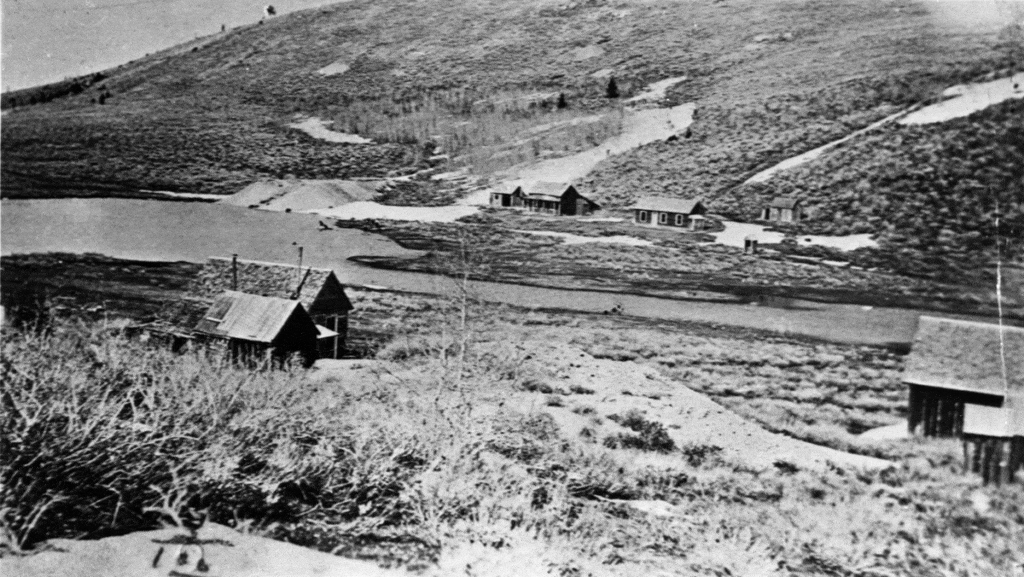Deer Valley Resort is celebrating its 40th season in operation this ski season. This is the first article in a series covering Deer Valley from Park City’s mining era through the resort’s early days.
In 1975 the Royal Street Corporation received permission to develop the Deer Valley Ski Resort. The resort opened in December 1981, immediately establishing new standards for excellent customer service.
Today most people think of Deer Valley as two distinct areas – upper Deer Valley (Silver Lake) and lower Deer Valley (Snow Park). What were these 2000 plus acres referred to before 1981? For multigenerational Parkites, Deer Valley has represented a mosaic of seven distinct areas.
Silver Lake was originally called Lake Flat, an area developed by prospectors, circa 1870, where a shallow lake sat. Eventually, 700 people called Lake Flat home. They worked some of Park City’s earliest mines – Flagstaff, Lady of the Lake, Naildriver, New York, McHenry, and others. By all measures it was a harsh existence. The winters were brutal. The surrounding mines, despite Herculean efforts to develop them, produced small amounts of valuable ore. Even the “simmering” lake vanished – inadvertently compromised by the Ontario #2 drain tunnel. Confirmation of significant and valuable ore reserves below Lake Flat doomed the scrappy community. By the late 1890s the location was abandoned. It would remain dormant until the early 1970s.

Credit: Park City Historical Society & Museum, Bea Kummer Collection
Snow Park owes its existence to the Great Depression. During the mid-1930s Park City received stimulus funds from the Works Progress Administration (a New Deal Agency) to encourage winter recreation, employment, and economic diversification. The area southeast of Park City represented a promising location to develop such a place. Except for two mines (the Queen Esther and the Park City Consolidated), the area was undeveloped. It was close to town (less than two miles) and featured rail service courtesy of the jointly owned Union Pacific/Denver and Rio Grande spur. The WPA constructed cross country ski trails, slides, ski jumps, toboggan runs and warming huts. The first Park City/Snow Park Winter Carnival occurred in 1936. Over 600 people purchased tickets and enjoyed the comfort and convenience of rail transportation from Salt Lake City to Park City via Parley’s Canyon. Ski Trains and Winter Carnivals continued until the advent of Amtrak in 1971.
Just east and slightly north of the newly developed Snow Park resided the Park City Consolidated Mine (Park Con). Commencing operation in September 1929, the mine set records for ore extraction. Alas, the Great Depression robbed the investors of corresponding riches with low metal prices. By 1940 the mine had closed. Devoid of industrial activity, the shaded glens and spring feed streams offered locals an inviting location to enjoy a summer picnic.
Abutting the Park Con and Snow Park was Frog Valley – a marshy ecosystem supporting a thriving colony of frogs. Adjacent to Frog Valley was Deer Valley Meadow – an open area used to graze cattle and sheep. The gateway to lower Deer Valley was Smith’s Field (today’s Deer Valley Plaza), where the Judge Mining Company’s smelter, which closed in 1929, also sat. Prior to the smelter (built 1916) the area supported a feedlot and slaughterhouse operated by George Smith Sr. Upon the smelter’s closure the land was repurposed to support multiple baseball fields – the area referred to as “Smithfield”.
The seventh and perhaps final segment of the Deer Valley mosaic is “Dear” Valley. Heber Avenue curved out of town heading southeast towards Heber City following the railroad tracks. Locals referred to this section of town as “Dear Valley,” acknowledging the vibrant Red Light District in that corridor. The fine payments from the businesses on the Row were the second largest tax generator for Park City.
In summary, before Deer Valley Resort, the vast acreage included in Deer Valley could be broken into seven distinct areas – Lake Flat, Snow Park, Park Con, Frog Valley, Deer Valley Meadow, Smithfield, and “Dear” Valley.
The author expresses his appreciation to Gary Kimball, Steve Leatham and the Hewitson Family (Dorothy, Jim, Ken and Bill) for their contributions to this article.